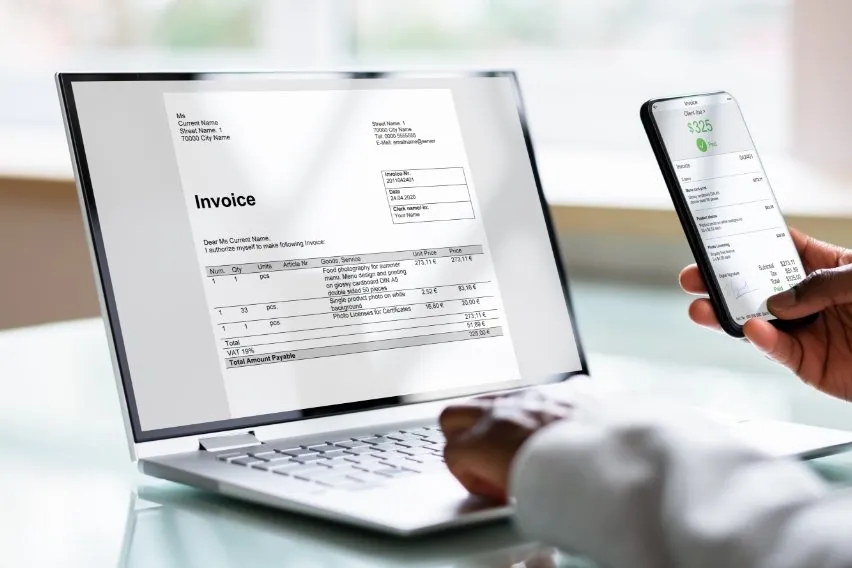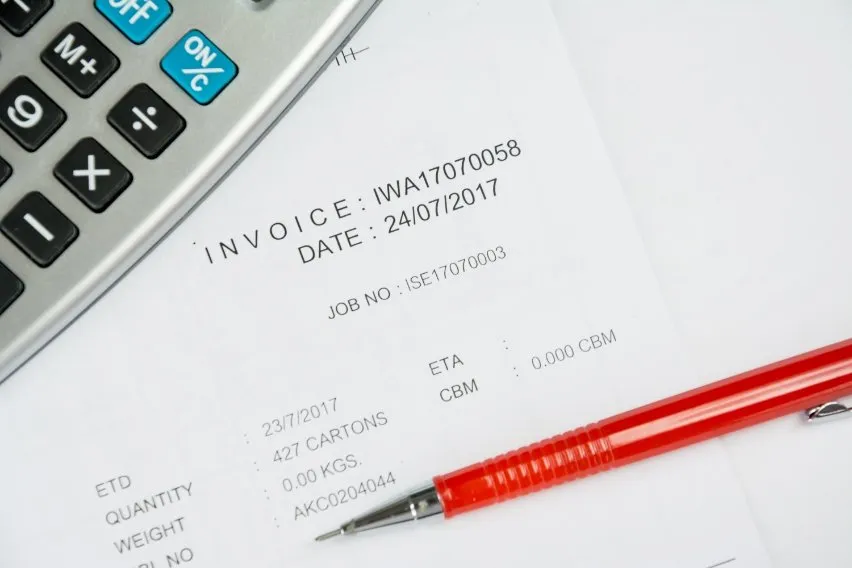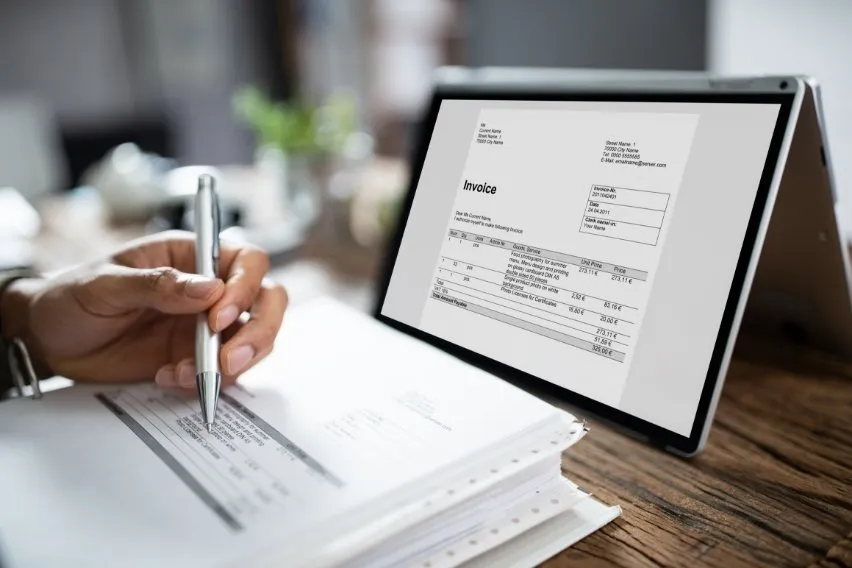Quote vs Invoice: What’s the Difference?

A quote is provided before the work begins, detailing the estimated cost of goods or services. Conversely, an invoice is issued after the work is completed, requesting payment for those goods or services. In essence, quotes help in understanding the potential cost, while invoices serve as a formal bill for the completed transaction.
To help you understand in detail, we have put together this guide that breaks down everything you need to know about quotes vs invoices.
Key Takeaways
- A quote is provided before work begins and details the estimated cost of goods or services.
- An invoice is issued after the work is completed, requesting payment for those goods or services.
- Quotes help in understanding the potential cost, while invoices serve as a formal bill for the completed transaction.
- Key differences between a quote and an invoice include purpose, timing, legality, content, and payment.
- Quotes should be accurate, written, and include details like pricing, business information, and line items.
- Invoices are detailed lists of products or services provided and are used to request payment.
- Invoices must include specific information such as names, addresses, invoice number, description of goods/services, and payment due date.
Table of Contents
- Key Difference Between a Quote and an Invoice
- What Is a Quote?
- When Should Quotes Be Used?
- Quote Preparation Tips
- Benefits of Providing a Quote
- What Is an Invoice?
- What Is an Invoice Used For?
- What’s Included in an Invoice?
- How Does the Invoice Process Work?
- Effortlessly Manage Your Quotes and Invoices with FreshBooks
- FAQs on Quote vs Invoice
Key Difference Between a Quote and an Invoice
The key differences between a quote and an invoice, which serve distinct roles in a transaction, are outlined below.
| Feature | Quote | Invoice |
| Purpose | Estimate cost before sale | Request payment after sale |
| Timing | Before sale and work | After sale and work completion |
| Legality | May be binding, but less so than invoice | Legally binding, requires payment |
| Content | Estimated costs, details of work | Detailed list of items, prices, taxes |
| Payment | Not a payment request | Formal request for payment |
Keep reading to learn when each should be used, the benefits, and how the processes are broken down.
What Is a Quote?
A quote may also be referred to as a sales quote, price quote, or a quotation. It is a document that lists the precise cost of a job. The total cost of the project is broken out in this set pricing, along with the timetable, scope, and other information required to generate future invoices.
An estimate is only the beginning of a quote. A set price cannot be altered once it has been quoted without a new business agreement. You must go to the location and do any necessary preliminary research before submitting a quote to ensure accuracy.
Legitimate and formal quotes are always written and should contain the following pieces of information:
- Pricing for materials, labor, taxes, and any relevant discounts that are accurate
- Branding and logo for the business, name of the business, and contact details
- A formal salutation thanking the client for their time
- Line items for requested goods and services
- Additional ways to advise clients of pertinent offerings
The completion of a price quote shouldn’t be hurried. Make sure there are no grammatical, spelling, or typographical issues by checking it twice. In addition to coming off as unprofessional, this could cost you money if the quantity or amount is inaccurate (since a quote is a legally binding document).

When Should Quotes Be Used?
You should have a quote ready the same day a customer asks for one. This helps you take full advantage of the momentum and the client’s determination to see the project through.
Quotes typically fall into one of three categories:
- Estimates. A bid with an estimated cost may be required for projects with variable costs and/or unforeseen durations. These can include things such as labor or goods with market-dependent prices. It is anticipated that there won’t be much of a deviation from the initial estimate, whether it is positive or negative. The majority of estimates are part of larger proposals and rarely stand alone for a project. Estimates are not legally binding and do not have a set price, in contrast to a formal, written quote.
- A fixed price. This estimate gives potential customers a precise estimate of the project’s cost. These often entail goods or services with a predetermined budget, deadline, and labor costs.
- A request for quotation (RFQ). A company may submit an RFQ to several suppliers to request a quote for their goods and/or services. Because they are written in a particular style that has been specified by the sender, quotes produced in response to an RFQ are distinctive. A company may offer a template or particular format and favor fixed-price quotes. This is so because the main purpose of an RFQ is to assess vendors before making a purchase.
Quote Preparation Tips
Quotes that are precise and expertly done show credibility. They also enhance client satisfaction and assist in shielding a company from risky financial and legal situations. Here are some suggestions to bear in mind when writing a formal quote.
- Make sure you categorize and price each project component and always get a pricing or service quote in writing.
- Include a statement stating that if the scope shifts, a new quote is required.
- Obtain signatures from everyone before beginning work.
Always keep in mind that a quote is a binding contract and should be handled as such. You can follow our article on how to make quotation to create more precise and professional quotes that showcase your expertise and protect your business interests.
Benefits of Providing a Quote
There are many advantages to giving quotes to prospective clients in the proper manner. Here are a few examples:
- Avoid taking on more unpaid work
- Aids in determining the contract’s value
- Ensures that everyone is on the same page by breaking down what is required for the work.
- Allows for improved cash flow planning
- Creates a base minimum wage for work
- Provide insightful commentary on your pricing
A quote reassures consumers that you are operating a respectable business and are willing to put your remarks in writing. It also protects you in the event that a client fails or refuses to pay.
What Is an Invoice?
An invoice is a detailed list of the products or services you gave your customers. It is an after-sale payment demand that provides customers with a way to pay for the goods or services they have received.
An invoice lists the items that were delivered, the services rendered, and the overall sum that is owed. They can be transmitted electronically or on paper by using invoicing software. Additionally, invoices may be paid in whole at once or in installments.
What Is an Invoice Used For?
A commercial document with a timestamp used to itemize and record transactions is called an invoice. The invoice will outline the conditions of the contract and detail the means of payment that are permitted if something was purchased on credit.
Billing for one-time projects or regular services can both be done through invoices. They are typically utilized where there is a continuous engagement with the consumer to request payment.
What’s Included in an Invoice?
Legally binding invoices must contain a certain amount of information. At the top, it should be quite apparent to see the word “Invoice.”
As well, you must always provide the following details on invoices:
- Name, address, and phone numbers of everyone involved in the invoice
- A special identification number or code
- Description of the delivered goods or services Date of invoice issuance
- Date of Goods/Services Supply
- Payment amount due, including taxes and pre-agreed discounts
- The due date for payments
You could also provide some more information if it’s needed. For example, you could include:
- Terms of payment
- Costs for late payments
- Options for payment
- Number of purchase orders
For a faster turnaround, freelancers and contractors may also decide to include their PayPal, Venmo, or other payment provider information on the invoice. FreshBooks provides a free invoice generator that is easy to use, intuitive, and powerful. You can even benefit from a step-by-step process that breaks down everything you need to create and send invoices.
How Does the Invoice Process Work?
The good news is that the invoice process is fairly simple and straightforward. Whether you front an organization or work for a small firm, the technique of invoicing is the same.
To put it simply and in a series of steps, the invoicing process works as follows:
- A customer consents to making a purchase of products or services.
- Services are provided, and goods are either sent or sold in person.
- An invoice lists the specifics of the sale as well as the parties involved.
- The customer receives the invoice.
- The client has a set amount of time to pay you after getting the invoice.
- The customer makes a complete payment, and the invoice is then reconciled.
- Customers could also ask for proforma invoices, another kind of sales invoice.

Effortlessly Manage Your Quotes and Invoices with FreshBooks
Tired of the hassle of creating quotes and invoices? FreshBooks has you covered. As this article highlights, both quotes and invoices are critical for managing your business transactions and ensuring you get paid. With FreshBooks, you can simplify both processes.
FreshBooks’ estimating software helps you create professional quotes with ease, ensuring you include all the necessary information like itemized costs, project scope, and terms. This helps you set clear expectations and win more business.
When it’s time to bill, FreshBooks invoicing software makes invoicing just as simple. The platform allows you to convert approved quotes into invoices with a few clicks, saving you time and reducing errors. You can also create invoices from scratch, ensuring they include all the essential details outlined in the article, such as customer information, item descriptions, and payment terms.
Streamline your entire workflow, from the initial quote to the final payment, with FreshBooks. Focus on what you do best – growing your business.
Try FreshBooks free for 30 days and experience the difference.
FAQs on Quote vs Invoice
What comes first quote or invoice?
A quote comes first, as it can act as a possibility of what might be included in a project and what it might cost the customer. The invoice is sent after the fact to outline payment and what was provided to the client.
How do I convert a quote to an invoice?
Converting a quote to an invoice is most easily done with accounting or invoicing software. FreshBooks provides the tools and solutions you need to make this process as easy as possible.
Is an invoice a quote or an estimate?
Before any work is done, a quote is always provided. It provides information about the costs of a job or project, as well as the goods or services required. After the work is finished and payment is required, an invoice is issued. It also includes all the information from the quote.
Is a quote a legal document?
A quotation outlines your conditions of service and the price you will charge your consumers. Your quote turns into a contract after a client accepts it. Thus having quality quotes is extremely important you can download a free quote template from our blog and customize it to your needs.
RELATED ARTICLES

 What Is Progress Invoicing & How Does It Work?
What Is Progress Invoicing & How Does It Work? 3-Way Matching: Definition & How It Works
3-Way Matching: Definition & How It Works Proforma Invoice vs Commercial Invoice: What’s The Difference?
Proforma Invoice vs Commercial Invoice: What’s The Difference? How to Write an Invoice: Step-by-Step Guide With Template
How to Write an Invoice: Step-by-Step Guide With Template Invoice Management: Definition & Benefits
Invoice Management: Definition & Benefits Sales Order vs Invoice: Meaning & Difference
Sales Order vs Invoice: Meaning & Difference